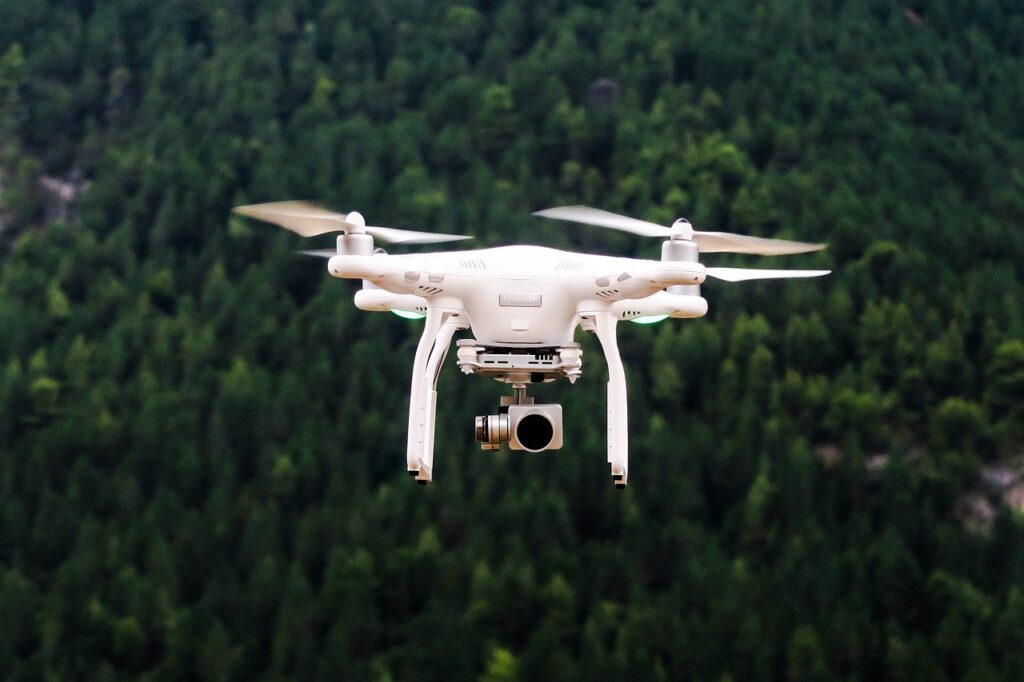Drones are driving revolutionary changes across varied sectors, including law enforcement. Specifically designed police drones are now used as essential tools for the police department, helping them respond to emergencies efficiently, safely, and quickly.
The global law enforcement drone market, which stood at $500 million in 2020, is now projected to grow to $2.8 billion by 2030, considering the large-scale use of police drones.
With multi-intelligence potentials, thermal imaging technology, and high-definition cameras, police drones can simultaneously sense and navigate in varied directions. They serve many different purposes than commercial drones, primarily helping the cops find traffic violations and suspects more efficiently and safely. So, let’s further find out the reasons why the police use drones:
1. Save Lives
When equipped with different attachments based on the task, drones can be conveniently controlled by just one officer from a safe distance. This makes handling dangerous situations, like hostage rescue, counter-insurgency, and car chases, easier as police officers can engage the perpetrators from a distance without risking their life. Furthermore, drones used in infrastructure surveillance during hostage rescue can capture high images and videos, providing a detailed view of the structure.
2. Traffic Accident Scene Investigation
Police drones capture aerial pictures and generate 3D models making it easier for the police to investigate crash scenes or traffic accident sites. The navigable drone 3D models help teams view the scene from varied angles, study vehicle damage closely, and collect crucial insights, like distances of different vehicles involved and skid marks.
Also, traffic management in congested areas and rush hours becomes easy with police drones surveying different traffic situations from above and using those details to redirect traffic from congested areas to other parts of the city. This reduces safety issues by lowering the risk of accidents and increasing the ability for people to evacuate areas in emergencies.
3. Chase Suspects
Nowadays, several police departments across the U.S. use drones to chase down suspects, especially those that take on roofs, making it difficult for ground units to know their location. Drones in the sky offer critical intelligence and guide the ground police toward proper positions.
And since drones are much quieter and smaller than helicopters, the suspects do not even notice them in the sky. Drones also help with weapon identification and possession among the suspects, further preventing the loss of life.
4. For Event Monitoring
The police are in charge of crowded events, like concerts and other gatherings, that may challenge proper law enforcement. Scanning for health emergencies, criminal activities, and suspicious activities is almost impossible at these congested events because of the crowd density.
While the average drone user is prohibited from flying drones over crowds, FAA waivers and exemptions exist for the police forces and exceptional cases.
Now, police can use drones at a safer distance and get close-ups of crowded events from the sky for more efficient responses to different problems. They generally use drones with 30x optical zoom capability cameras to take care of safety at crowded events while minimizing panic amongst the crowds in case of a mishap.
5. Inspect Active Shooters

Police can inspect active shooters unobtrusively with drones, investigate the activities of suspects and shooters from a distance, get proper insights, and devise the right plan to solve the problem. Real-time information and added insights from drone monitoring help the police control dangerous situations quickly without putting lives and law enforcement in unwanted danger.
6. For Search and Rescue Operations
Police drones, specifically the thermal versions attached to an infrared camera, play an essential role in search and rescue operations for missing animals and persons. These devices gather aerial data over extended areas allowing rescuers to map the entire search location and determine where a missing individual may be trapped
Also, police drones are helpful in locating elderly individuals and lost hikers who tend to wander away from their homes.
7. Mapping
Along the same lines, mapping features in police drones allow them to identify entry points and exits for evacuations, reach locations faster than ground vehicles, and even enter hostile, dangerous, and inaccessible situations.
A better understanding of the location before getting to the scene helps the police plan the most efficient and safest solution, thus minimizing the risk of unknowingly putting themselves in harmful situations. Police drone rescues are now becoming more common, and they are specifically helpful at night when attached to thermal cameras to pick up heat signatures.
8. Disaster Relief
Catastrophic events, such as hurricanes, earthquakes, tornadoes, and floods, can make it difficult for ground units to reach the affected areas. Destruction of vehicles, homes, and other large structures disrupts communities and causes significant accidents, leading to death.
It’s also risky for pilots in human-crewed vehicles to reach these hazardous areas that may have people stranded on top of vehicles, collapsed buildings, and other difficult-to-reach places. In such situations, police drones allow officers to survey the disaster sites from above and identify people and areas that require immediate help.
They also use drones to deliver medical supplies, food, and other necessities, like life jackets and rescue ropes, to these hazardous regions.
9. Aid the Firefighters
The police also use drones to support the fire department in locating fire and identifying potential victims. Drone usage also helps police officers and firefighters use their resources correctly and as required.
10. Seize Illegal Drones
Police drones can also identify unregistered and illegal drones, hazardous to the surrounding environment. Once they find illegal drone operations or operators using drones without proper licensing and training, the ground units offer them a choice between gaining drone law education or fines and arrest if they refuse to cooperate.
Conclusion
So, there you are! Using police drones for law enforcement offers groundbreaking work done efficiently and safely. With drones continuing to evolve and feature technologies like thermal imaging potentials and advanced zoom, small and large communities will benefit endlessly from these efficient and time-saving units that allow the police to do their work better.





